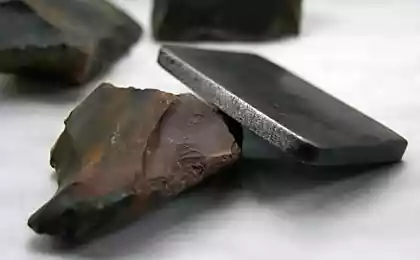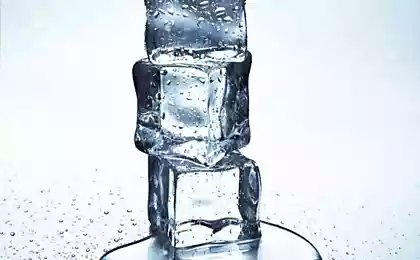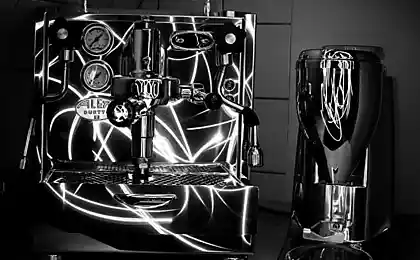2024
The colors of water
Water - say it is colorless. Then why have so beckons perfect turquoise waters off the Maldives and repels sullen grayness water during a storm?

What color is the water? This question is asked not only children but also adults, and the answer is - the water has no color. It is transparent and clear. But whether it is the correct answer?

Take a look at this lovely glass of water. Apart from fish, the water is colorless, right? No not like this. Water has a color, a human eye is not given to catch it.
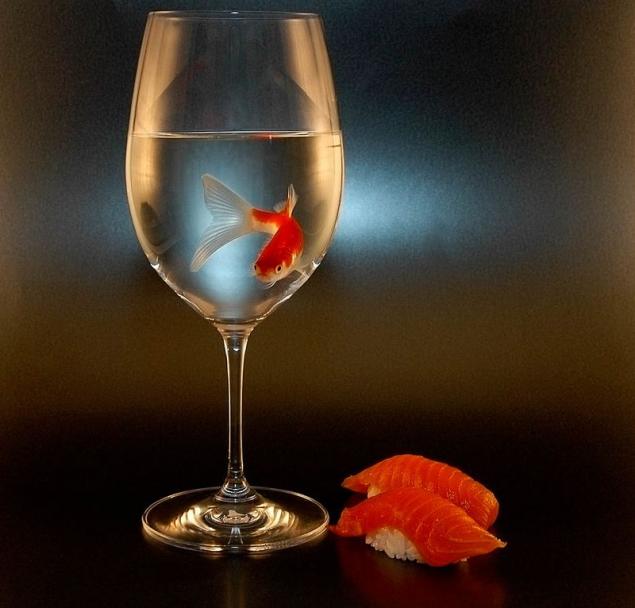
To see the true color of the water, we have to look at the big pond.

This can be done in a scientific way, but the human eye can see the rainbow color of the water under the right conditions.

You've already guessed what kind of color? Yes, it is blue, light blue or turquoise. Now, think about why you came to mind this color? Because it reflects the sky on the surface of a large body of water such as the sea?

But when the day is overcast, why the color remains the same or even more saturated?
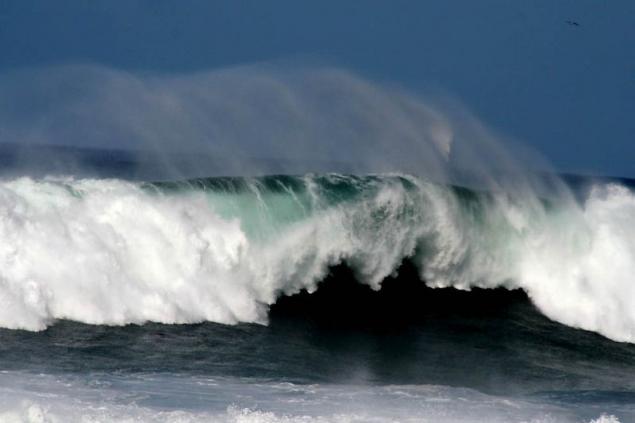
It is true that the reflection of light affects the color of the water, but only when the surface is practically immobile. This photo was taken in Los Cabos, Mexico, and it demonstrates a calm and serene sea - the blue. Red - a reflection, not the color of water.

The brightness of the color depends on the angle at which we are looking for water, which is called scientific language setting angle. In simple terms, it depends on how many degrees you are remote from the water. The higher the angle, the blue water due to reflection. And all because the reflectivity of the water is higher in direct relation to the angle of installation. Water may be reflective quickly under these conditions.

Of course, that is in the water plays an important role in its color. These salt lakes full of algae USA. Pink algae. No, it is not true that the water level is so low pH value, when flamingos tried to land there, then simply vanished. Throughout the "blame" a large amount of algae Dunaliella salina.
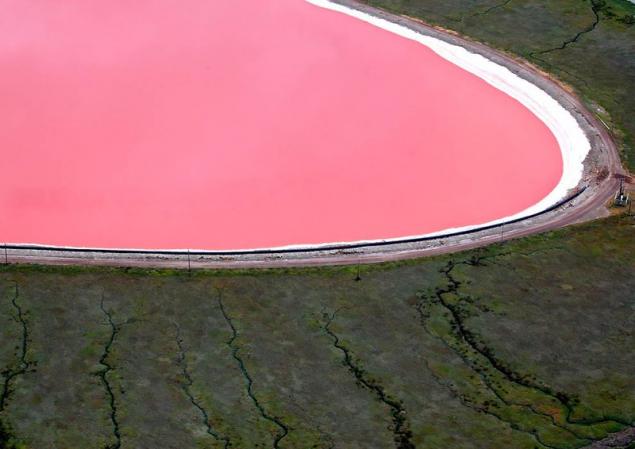
Usually algae associated with the color green, and it is, of course, changes the color of the water. But it can be done and a person. Chicagoans often change the color of the water in its river green St. Patrick's Day.
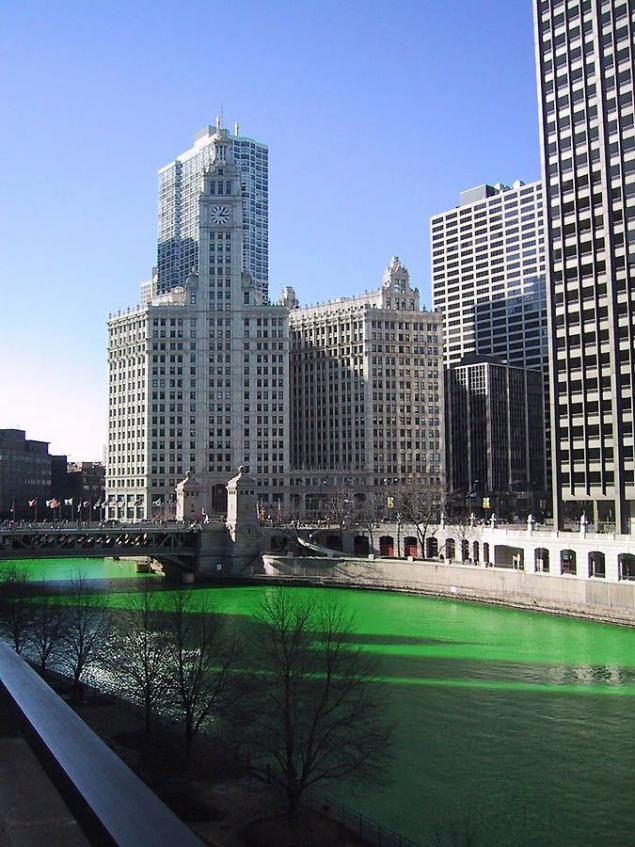
The greatness of the deep blue sea at Montserrat. Most of the color comes from the depth of the water, and does not reflect on the surface of the sun. White sunbeams contain all colors in the spectrum. The water absorbs the color, but some of them it absorbs better than others. But this requires the "Company". In other words, take a cup of sea water, and it will seem transparent, but should pour it back into the sea, and she will join the endless molecules H2O, becoming blue.

Sea water also can absorb infrared light, but because the sea is not red. However, water is not very good at absorbing blue color so that the color is transmitted through the water. Since it is not absorbed, we believe the water blue.

Yes, this principle also applies to the sky and the blue.

Ferries off the coast of the Maldives in the sea, among its many colors. If you've ever been in the pool with whitewashed sides and bottom, you have noticed that the water seems to turquoise. Even if there is no light that can be reflected.

So it's all about the outside world - the best water color can be seen from above. And this beautiful picture shows this well.

In terms of the visible spectrum, red and blue - complementary colors. So we see the blue color when looking at how color passes through the water at a depth. The lower we go down, the deep blue.

When divers are using flashlights, there are "true" color, but the rest of the distance appears blue even when it really is not.

This color can be seen in deep snow or ice. In the same way, it is possible to contemplate a frozen waterfall - almost blue-green hue.

That we see color and can guide what is in the water. Sometimes, lost in thought looking out to sea, you can see that in different parts of it in different colors. This magnificent snapshot of the Maldives shows the variety of colors of the sea. It can be caused by the presence of clouds and their shadows, but often is not the case (especially on cloudless days). This is what is in the sea, not on it.

Snapshot of Liguria in Italy perfectly illustrates the different shades of the sea.

Typically, lakes and oceans contain a plurality of particles in water. This combination of dirt and dead plants and animals. Living organisms also because of its size, can change the way we perceive the color of the water. When the water can not absorb a lot of blue color, it affects the elements in the water, and the blue light reflected back upward. Tropical water and, say, the Atlantic Ocean differ from each other because in the tropics color comes from the absorption of red, leaving us only see blue.
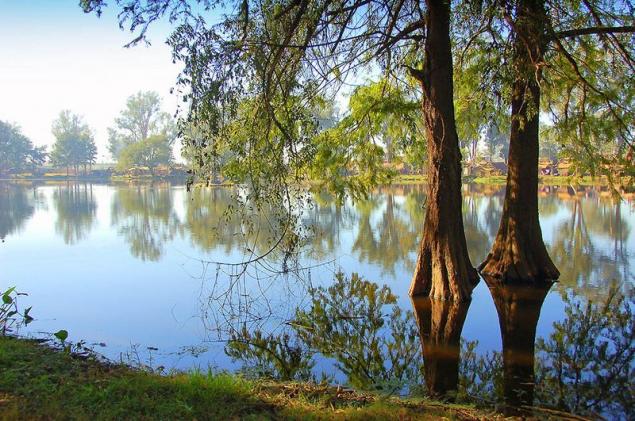
In this amazing wave can see all the colors of the water off the coast of Guadeloupe. The water in the Atlantic Ocean, on the contrary, has a blue hue, caused by the suspension of countless plant, animal and partial dirt.

Why are some ponds is not blue? Some black or gray or brown. Again, this depends on the fact that water is absorbed. The turbidity of the dirty water can be explained by scientific methods. Dirt is reflected more red color than blue so that when water is present in the mud, it turns brown.
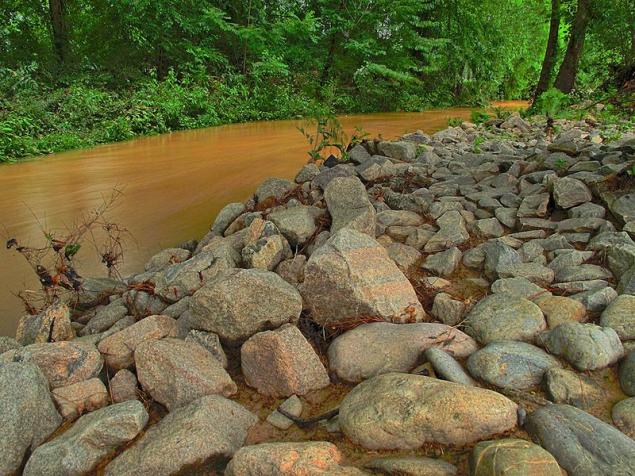
The lake is full of peat will look black, as the peat vertically absorbs all the light that falls on it. On a cloudy day the sea seems gray and yes, it kind of depends on the sky. It is also because clouds filtered the red light from the sun before it reaches the water.
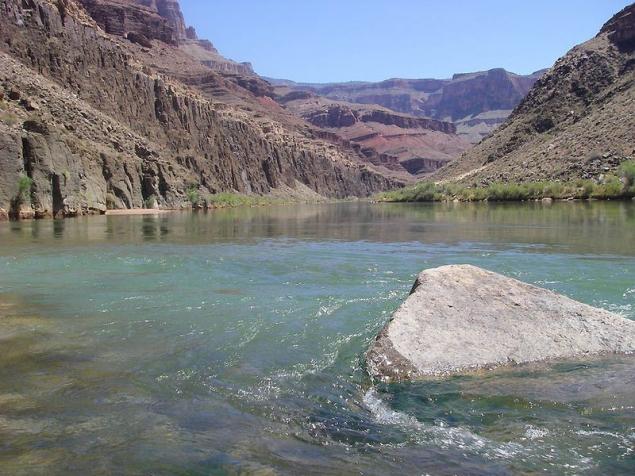
We see the water in different statuses. It may be colored particles, the presence of bacteria or reflection on the surface of the world. Ice and snow can produce a deep rich blue color, such as Multnomah Falls in Oregon. The water itself is blue, which appeared as a result of the molecular structure and its behavior.

There is clearly visible blue color, when a pair of climbers conquer the mountain in Banff National Park in Canada.

Of course, the water in the Banff National Park known for its turquoise color. All thanks to rock particles in a melting glacier. Moraine Lake is known for its incredible blue, from which almost kept his eyes.

If you want to look at the natural color of the water, it can be done at virtually no cost. Take a long tube of clean water. That water is not drained, when you look into it, then close each hole glass.
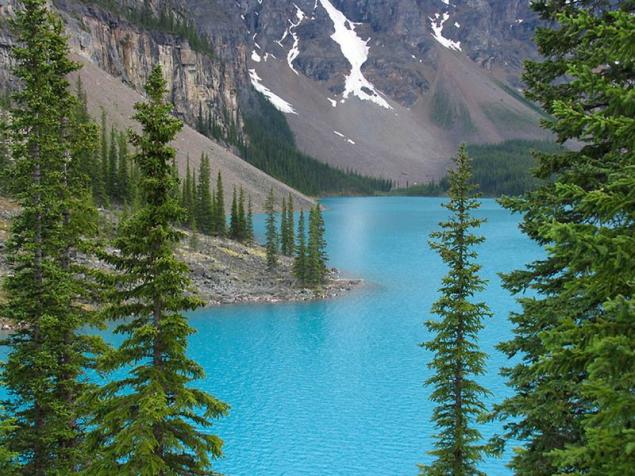
If you look down through the first "window" on a piece of paper, illuminated by sunlight, you will see a pale shade of blue water.

via source

What color is the water? This question is asked not only children but also adults, and the answer is - the water has no color. It is transparent and clear. But whether it is the correct answer?

Take a look at this lovely glass of water. Apart from fish, the water is colorless, right? No not like this. Water has a color, a human eye is not given to catch it.

To see the true color of the water, we have to look at the big pond.

This can be done in a scientific way, but the human eye can see the rainbow color of the water under the right conditions.

You've already guessed what kind of color? Yes, it is blue, light blue or turquoise. Now, think about why you came to mind this color? Because it reflects the sky on the surface of a large body of water such as the sea?

But when the day is overcast, why the color remains the same or even more saturated?

It is true that the reflection of light affects the color of the water, but only when the surface is practically immobile. This photo was taken in Los Cabos, Mexico, and it demonstrates a calm and serene sea - the blue. Red - a reflection, not the color of water.

The brightness of the color depends on the angle at which we are looking for water, which is called scientific language setting angle. In simple terms, it depends on how many degrees you are remote from the water. The higher the angle, the blue water due to reflection. And all because the reflectivity of the water is higher in direct relation to the angle of installation. Water may be reflective quickly under these conditions.

Of course, that is in the water plays an important role in its color. These salt lakes full of algae USA. Pink algae. No, it is not true that the water level is so low pH value, when flamingos tried to land there, then simply vanished. Throughout the "blame" a large amount of algae Dunaliella salina.

Usually algae associated with the color green, and it is, of course, changes the color of the water. But it can be done and a person. Chicagoans often change the color of the water in its river green St. Patrick's Day.

The greatness of the deep blue sea at Montserrat. Most of the color comes from the depth of the water, and does not reflect on the surface of the sun. White sunbeams contain all colors in the spectrum. The water absorbs the color, but some of them it absorbs better than others. But this requires the "Company". In other words, take a cup of sea water, and it will seem transparent, but should pour it back into the sea, and she will join the endless molecules H2O, becoming blue.

Sea water also can absorb infrared light, but because the sea is not red. However, water is not very good at absorbing blue color so that the color is transmitted through the water. Since it is not absorbed, we believe the water blue.

Yes, this principle also applies to the sky and the blue.

Ferries off the coast of the Maldives in the sea, among its many colors. If you've ever been in the pool with whitewashed sides and bottom, you have noticed that the water seems to turquoise. Even if there is no light that can be reflected.

So it's all about the outside world - the best water color can be seen from above. And this beautiful picture shows this well.

In terms of the visible spectrum, red and blue - complementary colors. So we see the blue color when looking at how color passes through the water at a depth. The lower we go down, the deep blue.

When divers are using flashlights, there are "true" color, but the rest of the distance appears blue even when it really is not.

This color can be seen in deep snow or ice. In the same way, it is possible to contemplate a frozen waterfall - almost blue-green hue.

That we see color and can guide what is in the water. Sometimes, lost in thought looking out to sea, you can see that in different parts of it in different colors. This magnificent snapshot of the Maldives shows the variety of colors of the sea. It can be caused by the presence of clouds and their shadows, but often is not the case (especially on cloudless days). This is what is in the sea, not on it.

Snapshot of Liguria in Italy perfectly illustrates the different shades of the sea.

Typically, lakes and oceans contain a plurality of particles in water. This combination of dirt and dead plants and animals. Living organisms also because of its size, can change the way we perceive the color of the water. When the water can not absorb a lot of blue color, it affects the elements in the water, and the blue light reflected back upward. Tropical water and, say, the Atlantic Ocean differ from each other because in the tropics color comes from the absorption of red, leaving us only see blue.

In this amazing wave can see all the colors of the water off the coast of Guadeloupe. The water in the Atlantic Ocean, on the contrary, has a blue hue, caused by the suspension of countless plant, animal and partial dirt.

Why are some ponds is not blue? Some black or gray or brown. Again, this depends on the fact that water is absorbed. The turbidity of the dirty water can be explained by scientific methods. Dirt is reflected more red color than blue so that when water is present in the mud, it turns brown.

The lake is full of peat will look black, as the peat vertically absorbs all the light that falls on it. On a cloudy day the sea seems gray and yes, it kind of depends on the sky. It is also because clouds filtered the red light from the sun before it reaches the water.

We see the water in different statuses. It may be colored particles, the presence of bacteria or reflection on the surface of the world. Ice and snow can produce a deep rich blue color, such as Multnomah Falls in Oregon. The water itself is blue, which appeared as a result of the molecular structure and its behavior.

There is clearly visible blue color, when a pair of climbers conquer the mountain in Banff National Park in Canada.

Of course, the water in the Banff National Park known for its turquoise color. All thanks to rock particles in a melting glacier. Moraine Lake is known for its incredible blue, from which almost kept his eyes.

If you want to look at the natural color of the water, it can be done at virtually no cost. Take a long tube of clean water. That water is not drained, when you look into it, then close each hole glass.

If you look down through the first "window" on a piece of paper, illuminated by sunlight, you will see a pale shade of blue water.

via source



